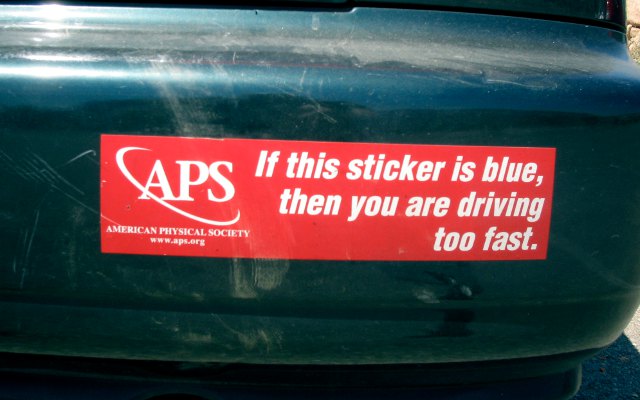There is a running joke amongst physicists about a bumper sticker than turns blue.

This is a joke about the Doppler effect. When a source of waves are moving towards a detector (e.g. your ears or eyes) the frequency of the wave changes. For a source moving towards you the waves are “compressed”, creating a higher frequency; for a source moving away the waves are “stretched out”, creating a lower frequency.

The Doppler effect is only really noticeable to humans in the case of sound waves; the Doppler effect is responsible for the changing engine note of a vehicle as it passes you. But the effect applies at all frequencies, including visible light. The joke arises because one would have to be travelling very fast for the Doppler effect in visible light to be noticeable.
How fast?
Red light has a wavelength of about 700 nanometres and blue light about 400 nm. If we plug these figures into the Wolfram|Alpha “computational knowledge engine” we get a result of −152 kilometres a second, meaning that if the sticker had turned blue someone would be coming towards you at about 340 million miles per hour or about 51% the speed of light.
152,000km/s
Y cn nw prchs ths stckr nd thr fn physcs swg hr: str.ps.rg . Hppy shppng!!
^r y fckng rtrdd?
You write :”The Doppler effect is only really noticeable to humans in the case of sound waves; the Doppler effect is responsible for the changing engine note of a vehicle as it passes you. But the effect applies at all frequencies, including visible light.” This is misleading. It reads as if sound waves and light waves were the same kind of waves, only differing in frequency. However, electromagnetic waves are transversal and do not require a medium to propagate, in complete contrast to sound waves.